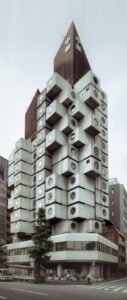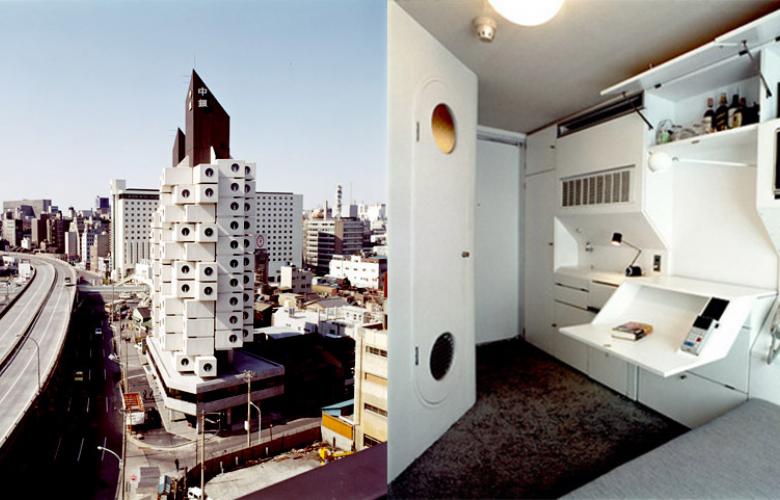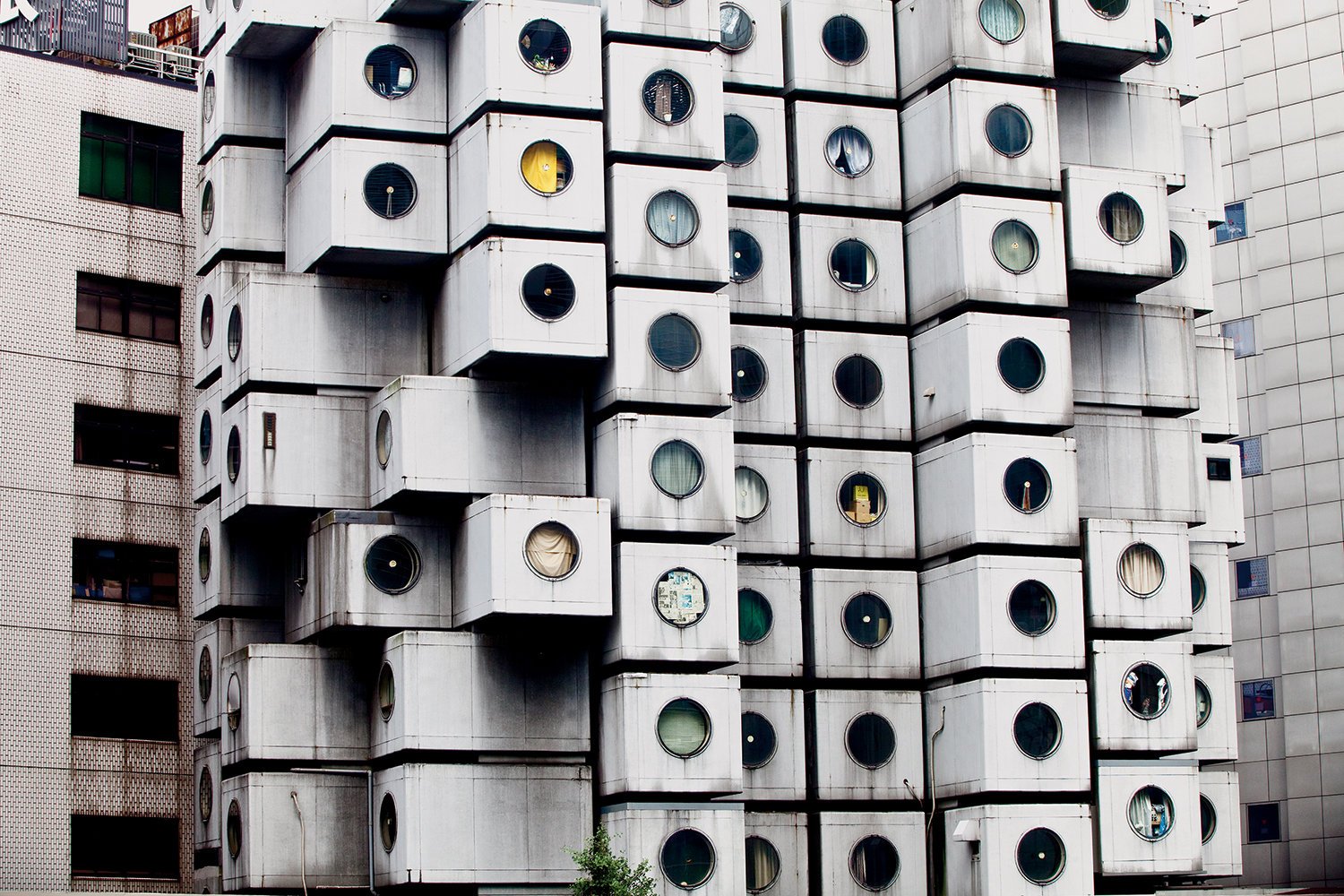
The skyline of Tokyo was once highly dominated by The Nakagin Capsule tower or ‘Nakagin Kapuseru Tawā’, the name that has become a local icon. Designed by architect Kisho Kurokawa, this was mixed-use development to create a sustainable facility in the center of the city. The Nakagin became a good option for the travelling businessmen looking for accommodation spaces in Tokyo. The structure was designed as an emblem of Japan’s post-war recovery. This movement was known as ‘The Japanese Metabolism movement’.
The Nakagin even today is mentioned for its design being ‘futuristic’ and has stood the test of time. But now, with the change in Tokyo’s political and social scenario’s The Nakagin Capsule Tower seems to be lost in time. An architectural marvel that was once an emblem of Japan’s thought process is today left abandoned ad unused. What led to its decline?
The glorious past


Kurokawa was one of the pioneers of Japan’s Metabolist views and its post-war modern aspirations. Therefore, The Nakagin was designed with an idea of the future aesthetic. Kisho Kurokawa had introduced the concepts of adaptive architecture and flexible interiors through this path-breaking design.
This structure gave immense recognition to Japan as well as to Architect Kisho Kurokawa. The design process involved the contribution of professionals from different realms. This futuristic thought of capsule architecture can truly be credited to the structural team, engineers, architects, and other stakeholders.
Kisho Kurokawa was successful in creating unique and innovative imagery through this design. Hence, it became a familiar name being mentioned in literary works and pop culture references. Nakagin Capsule tower Building was also known to have become an Instagram ‘hotspot’. Posting pictures with the Nakagin Tower in the backdrop soon became a trend. The building was also featured in a lot of Hollywood movies and games. Therefore, The Nakagin Capsule Tower once stood high as Japan’s pride and a living example of Capsule architecture.
The decline of a Timeless beauty


Nakagin Capsule building’s future seems to be trapped between uncertainties. The notion of preserving an architectural masterpiece seems to be defeated against the idea of enchasing the land value in the prime centre of Tokyo.
Post the death of Kisho Kurokawa, the owners of the building began floating the idea of demolition to make way for larger houses and better residential units. Nakagin might be razed down to debris. The government would have no say in this as it is private property. The government of Japan has no stance because this structure is still not being identified as ‘heritage’. There are some legal implications as well. It is an irony that the structure that is an example of ‘flexibility’ and ‘recyclability’ is to be demolished.
A lot of owners have left the space abandoned. The once dynamic and self-sustaining capsules are now in a state of disrepair. Owners now complain that there are issues regarding the pace crunch and heating. Moreover, the plans for future expansion and as designed by Kurokawa never materialized because it involves cost and no owner wants to spend on this space. Hence, the feature of unplugging and plugging and changing configurations has not turned out to be feasible.
An appeal
It is quite unfortunate that Nakagin is left on the path of decay. The old residents now aspire for more monetary returns and spacious homes. There are talks of razzing down the whole structure to make way for their aspirations, which is not wrong on their part. But this is no ordinary structure that we are talking about. Here, the future of Japan’s Metabolist emblem is at stake.
This structure is one of the masterpieces which deserves to be preserved. Eve in the state os ruin, the structure still attracts tourists ad architectural researchers, who visit the building to experience this marvel. The idea of a plug-in architecture, the flexibility of spaces, the innovative interiors, and the overall idea of capsule architecture are what makes it worth mentioning. Hence, Japan’s authorities must give due consideration to the future of Nakagin.
There is always a way out. The political and social advancements can surely ensure that a feasible solution can be derived by preserving the interests of the owners as well as the architectural fraternity.

